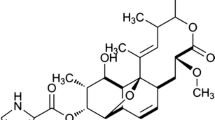Abstract
Cordyceps militaris produces cordycepin (3′-deoxyadenosine), which has various activities, including anti-oxidant, anti-tumoral, anti-viral, and anti-inflammatory. Ribonucleotide reductase (RNR) seems to be a candidate to produce cordycepin in C. militaris because RNR catalyzes the reduction of nucleotides to 2′-deoxynucleotides, whose structures are similar to that of cordycepin. However, the role of RNR has not been confirmed yet. In this study, complementary DNAs (cDNAs) of C. militaris RNR (CmRNR) large and small subunits (CmR1 and CmR2) were cloned from C. militaris NBRC9787 to investigate the function of CmRNR for its cordycepin production. C. militaris NBRC9787 began to produce cordycepin when grown in a liquid surface culture in medium composed of glucose and yeast extract for 15 days. CmR1 cDNA and CmR2 cDNA were obtained from its genomic DNA and from total RNA extracted from its mycelia after cultivation for 21 days, respectively. Recombinant CmR1 and CmR2 were expressed individually in Escherichia coli and purified. Purified recombinant CmR1 and CmR2 showed RNR activity toward adenosine diphosphate (ADP) only when two subunits were mixed but only show the reduction of ADP to 2′-deoxyADP. These results indicate that the pathway from ADP to 3′deoxyADP via CmRNR does not exist in C. militaris and cordycepin production in C. militaris may be mediated by other enzymes.







Similar content being viewed by others
References
Valverde, M. E., Hernández-Pérez, T., & Paredes-López, O. (2015). Edible mushrooms: improving human health and promoting quality life. International Journal of Microbiology, 2015, 376387.
Zheng, P., Xia, Y., Zhang, S., & Wang, C. (2013). Genetics of Cordyceps and related fungi. Applied Microbiology and Biotechnology, 97, 2797–2804.
Das, S. L., Masuda, M., Sakurai, A., & Sakakibara, M. (2010). Medicinal uses of the mushroom Cordyceps militaris: current state and prospects. Fitoterapia, 81, 961–968.
Zhao, J., Xie, J., Wang, L. Y., & Li, S. P. (2014). Advanced development in chemical analysis of Cordyceps. Journal of Pharmaceuticals and Biomedical Analysis, 87, 271–289.
Cunningham, K. G., Manson, W., Spring, F. S., & Hutchinson, S. A. (1950). Cordycepin, a metabolic product isolated from cultures of Cordyceps militaris (Linn.) link. Nature, 166, 949.
Zheng, P., Xia, Y., Xia, G., Xiong, C., Hu, X., Zhang, S., Zheng, H., Huang, Y., Zhou, Y., Wang, S., Zhao, G. P., Liu, X., ST Leger, R. J., & Wang, C. (2011). Genome sequence of the insect pathogenic fungus Cordyceps militaris, a valued traditional Chinese medicine. Genome Biology, 12, R116.
Yin, Y., Yu, G., Chen, Y., Jiang, S., Wang, M., Jin, Y., Lan, X., Liang, Y., & Sun, H. (2012). Genome-wide transcriptome and proteome analysis on different developmental stages of Cordyceps militaris. PloS One, 7, e51853.
Xiang, L., Li, Y., Zhu, Y., Luo, H., Li, C., Xu, X., Sun, C., Song, J., Shi, L., He, L., Sun, W., & Chen, S. (2014). Transcriptome analysis of the Ophiocordyceps sinensis fruiting body reveals putative genes involved in fruiting body development and cordycepin biosynthesis. Genomics, 103, 154–159.
Zhang, Q., Liu, Y., Di, Z., Han, C. C., & Liu, Z. (2016). The strategies for increasing cordycepin production of Cordyceps militaris by liquid fermentation. Fungal Genomics & Biology, 6, 1000134.
Kuo, H. C., Huang, I. C., & Chen, T. Y. (2015). Cordyceps s.L. (Ascomycetes) species used as medicinal mushrooms are closely related with higher ability to produce cordycepin. International Journal of Medicinal Mushrooms, 17, 1077–1085.
Kolberg, M., Strand, K. R., Graff, P., & Andersson, K. K. (2004). Structure, function, and mechanism of ribonucleotide reductases. Biochimica et Biophysica Acta, 1699, 1–34.
Håkansson, P., Dahl, L., Chilkova, O., Domkin, V., & Thelamder, L. (2006). The Schizosaccharomyces pombe replication inhibitor Spd1 regulates ribonucleotide reductase activity and dNTPs by binding to the large Cdc22 subunit. Journal of Biological Chemistry, 281, 1778–1783.
Minnihan, E. C., Ando, N., Brignole, E. J., Olashansky, L., Chittuluru, J., Asturias, F. J., Drennan, C. L., Nocera, D. G., & Stubbe, J. (2013). Generation of a stable, aminotyrosyl radical-induced α2β2 complex of Escherichia coli class Ia ribonucleotide reductase. Proceedings of the National Academy of Sciences of the United States of America, 110, 3835–3840.
Guarino, E., Salguero, I., & Kearsey, S. E. (2014). Cellular regulation of ribonucleotide reductase in eukaryotes. Seminars in Cell and Developmental Biology, 30, 97–103.
Reichard, P. (2010). Ribonucleotide reductases: substrate specificity by allostery. Biochemical and Biophysical Research Communications, 396, 19–23.
Sanvisens, N., Romero, A. M., An, X., de Llanos, R., Martínez-Pastor, M. T., Baňó, M. C., Huang, M., & Puig, S. (2014). Yeast Dun1 kinase regulates ribonucleotide reductase inhibitor Sml1 in response to iron deficiency. Molecular and Cellular Biology, 34, 3259–3271.
Zhang, Z., Yang, K., Cheng, C. C., Feser, J., & Huang, M. (2007). Role of the C-terminus of the ribonucleotide reductase large subunit in enzyme regeneration and its inhibition by Sml1. Proceedings of the National Academy of Sciences of the United States of America, 104, 2217–2222.
Wu, X., & Huang, M. (2008). Dif1 controls subcellular localization of ribonucleotide reductase by mediating nuclear import of the R2 subunit. Molecular and Cellular Biology, 28, 7156–7167.
Acknowledgements
Authors thank Mr. Yasuhiro Kojima who performed the gene manipulation and HPLC measurement.
Author information
Authors and Affiliations
Corresponding author
Ethics declarations
Conflict of Interest
The authors declare that they have no conflict of interest.
Rights and permissions
About this article
Cite this article
Kato, T., Ahmad, S. & Park, E.Y. Functional Analysis of Ribonucleotide Reductase from Cordyceps militaris Expressed in Escherichia coli . Appl Biochem Biotechnol 182, 1307–1317 (2017). https://doi.org/10.1007/s12010-017-2400-0
Received:
Accepted:
Published:
Issue Date:
DOI: https://doi.org/10.1007/s12010-017-2400-0




